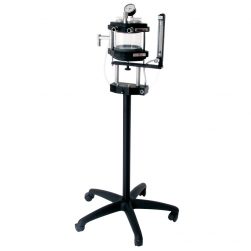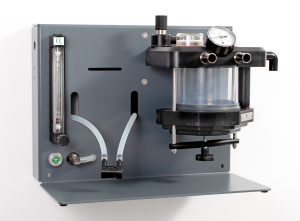
The term seizure is used to describe a self-limiting, asynchronous discharge of neurons within the brain. In humans, seizures are diagnosed on the basis of electroencephalography; in veterinary medicine, however, seizures are typically diagnosed on the basis of clinical appearance.
Given that most seizures are witnessed by pet owners, not veterinarians, diagnosing seizures in veterinary patients — especially cats — comes with some unique challenges.
Table of Contents
Types of feline seizures
There are two basic categories of seizure:
- Generalized seizures affect the entire brain, resulting in the loss of consciousness.
- Focal seizures affect only a portion of the brain, within a single hemisphere, and are not typically associated with the loss of consciousness. These seizures can progress to generalized seizures.
Focal seizures are the most common manifestation of seizure activity in cats; this is in direct contrast to dogs, which tend to have generalized seizures. This can add a significant challenge to recognizing and diagnosing feline seizures.
If a pet has repeated seizures with no known underlying cause, it may be diagnosed with epilepsy. Epilepsy is defined as repeated seizures occurring more than 24 hours apart without an identifiable underlying cause.
Although epilepsy is estimated to affect 1-2% of cats, there is little scientific literature focused on the diagnosis and treatment of this condition. Treatment recommendations for feline epilepsy are typically extrapolated from approaches used in dogs and/or humans.
“Fly-biting” and other clinical signs
Focal seizures in cats most commonly manifest as unilateral facial or limb twitching. Other common signs of a focal seizure include hypersalivation, increased/frequent swallowing, increased activity (obsessive running), urination, and defecation.
Many cats demonstrate altered mentation during seizures; owners may report that the cat is “staring off into space” or experiencing other sudden behavioral or mental changes. Pupillary dilation may also be observed.
Focal seizures are often referred to as “fly-biting seizures” because of the abnormal behaviors and mouth movements that they cause.
Etiology of feline seizures
There are a number of possible causes of seizures in cats, including primary/idiopathic epilepsy, symptomatic epilepsy, probable symptomatic epilepsy, and reactive epilepsy.
Primary epilepsy
Primary or idiopathic epilepsy is epilepsy that occurs without an identifiable macroscopic brain lesion. These seizures are attributable to hyperexcitability of cortical neurons, caused by membrane ion channel defects or neurotransmitter imbalances.
Although idiopathic epilepsy is a common cause of seizures in dogs, it is estimated that less than 1 in 4 cats presented for seizures meet the criteria for diagnosis with idiopathic epilepsy.
Idiopathic epilepsy is most commonly observed in young cats, specifically those between one and seven years old, but it can be diagnosed in cats of any age.
Symptomatic epilepsy
Symptomatic epilepsy occurs secondary to an underlying brain lesion. Potential causes of symptomatic epilepsy include brain neoplasia, infectious or immune-mediated meningoencephalitis, vascular events (stroke), and congenital abnormalities.
In cats, symptomatic epilepsy is often associated with feline infectious peritonitis (FIP), toxoplasmosis, neoplasia (lymphoma or meningioma), ischemic infarcts, or hemorrhagic infarcts.
Probable symptomatic epilepsy
Probable symptomatic epilepsy describes epilepsy in which a brain lesion cannot be identified, but is strongly suspected.
A cat that develops seizures immediately after anesthesia might be diagnosed with probable symptomatic epilepsy, even if the actual lesion causing the seizures cannot be identified.
Reactive seizures
Reactive seizures are caused by disease outside of the central nervous system, such as metabolic disease or toxin exposure. These seizures are not classified as epilepsy, because they are caused by extracranial disease.
The most common causes of reactive seizures in cats include hepatic encephalopathy, hypoglycemia, and organophosphate exposure; other potential causes include severe uremia, severe hypertension, hyperthyroidism, hypocalcemia, hypertriglyceridemia, and polycythemia vera.
Diagnostics for feline seizures
The diagnostic workup of a patient with seizures begins with a thorough medical history and comprehensive physical exam. Neurologic abnormalities may suggest the likelihood of underlying brain disease, although a normal neurologic examination does not rule out the possibility of an underlying brain lesion.
Common neurologic signs observed in cats with symptomatic focal seizures include unilateral changes in menace response, nasal sensations, and proprioception. Owners may also report neurologic changes at home, such as personality changes, behavioral changes (such as increased hiding), and circling (towards the affected side).
Following a history and physical exam, preliminary tests for a cat with seizures should include a complete blood cell count, serum biochemistry profile, urinalysis, and thyroid screen. Pre- and post-prandial bile acids testing should also be considered, especially if liver value changes are noted on the biochemistry profile. These tests rule out metabolic diseases that may be associated with seizures in cats.
Because the likelihood of idiopathic epilepsy is low in cats, additional testing should always be recommended after metabolic disease has been ruled out. Imaging should be performed via magnetic resonance imaging (MRI) or computed tomography (CT), with MRI typically considered the better imaging technique for brain tissues.
Cerebrospinal fluid (CSF) should also be collected for analysis while the pet is under anesthesia, as it can provide significant benefit in diagnosing infectious or immune-mediated disease.
Related Products
Treating feline seizures
Approximately 75% of cats presented for epilepsy have an underlying cause for their seizures. Ideally, this underlying condition can be diagnosed and treated, leading to resolution of the seizures.
If a cat has idiopathic epilepsy or is not responding to treatment of the underlying disease, antiepileptic medications may be considered.
Antiepileptic drugs in cats have not been studied as extensively as these medications in dogs. For this reason, there is little consensus regarding when these medications should be initiated in cats. General guidelines in dogs state that treatment should be initiated when seizure frequency reaches once monthly or if a pet is experiencing cluster seizures; in general, these guidelines are probably also appropriate for cats.
In most cases, phenobarbital is used as a first-line therapy for feline seizures. Phenobarbital is typically started at a dose of 2-3 mg/kg twice daily, with levels measured approximately three weeks after beginning treatment.
Therapeutic doses in cats are extrapolated from those determined in dogs; in general, a phenobarbital level of 20-30 ug/mL is targeted. Side effects of phenobarbital in dogs include polyuria, polydipsia, and polyphagia; cats appear to be less likely to develop these side effects, but they may occur.
Serious side effects are uncommon, but may include liver and bone marrow toxicity.
Potassium bromide, although commonly used to treat seizures in dogs, is not recommended in cats. This medication is associated with a high likelihood of serious reactions in cats, including bronchial disease.
Zonisamide is often impractical in small cats, due to available capsule sizes. In larger cats (over 5 kg), it is typically initiated at 5-10 mg/kg/day and increased to as much as 20 mg/kg if necessary. At higher doses of 20 mg/kg, however, approximately 50% of cats will develop side effects such as ataxia or gastrointestinal signs.
Although zonisamide levels can be assessed by reference laboratories, this testing is not typically recommended because there is no established therapeutic range for this medication. Instead, zonisamide monitoring should include a complete blood cell count and serum biochemistry performed prior to starting medication, as well as 2-3 weeks after starting treatment.
Levetiracetam has also been used for seizure control in cats and is generally well-tolerated. The starting dose for this medication is 20 mg/kg every eight hours; extended-release formulations are not available in sizes appropriate for cats.
There are no published studies reporting adverse events with levetiracetam medication, although sedation may occur. Therapeutic level monitoring is not typically recommended.
Conclusion
Feline epilepsy has received less research attention than canine epilepsy. Because the seizures tend to be focal instead of generalized in nature, this condition may be overlooked by some pet owners and veterinarians.
Seizures in cats often indicate significant underlying disease, however, and should therefore receive a thorough diagnostic workup.
Sources and additional reading
- Garcia J. 2014. Journal Scan: Current understanding of feline epilepsy, diagnostic testing, and treatment. DVM360. Retrieved from http://veterinarymedicine.dvm360.com/journal-scan-current-understanding-feline-epilepsy-diagnostic-testing-and-treatment
- Moore S. 2014. Seizures and epilepsy in cats. Veterinary Medicine: Research and Reports. 2014(5): 41-47. Retrieved from https://www.dovepress.com/seizures-and-epilepsy-in-cats-peer-reviewed-fulltext-article-VMRR
- Hicks J. Managing Seizures: Etiology and Current Therapy. Retrieved from https://www.michvma.org/resources/Documents/MVC/2018%20Proceedings/hicks_02.pdf









